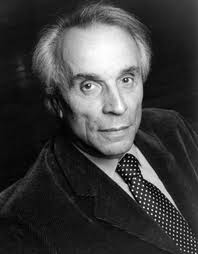<Back to Index>
- Historian Camille - Ernest Labrousse, 1895
PAGE SPONSOR

Camille - Ernest Labrousse (Barbezieux, Poitou - Charente, March 16, 1895 – May 24, 1988, Paris) was a French historian specializing in social and economic history.
Labrousse established a historical model centered on three nodes - economic, social and cultural - inventing the quantitative history sometimes now called "cliometrics". Eschewing biographies and the narrative accounts of individual witnesses, which have provided the backbone of traditional historiography, he applied statistical methods and influenced a whole generation. Fernand Braudel said that if it were not for Labrousse, "historians would never have set to work as willingly as they did on the study of wages and prices". Labrousse's prominence was also a result of his post at the Sorbonne, where he supervised a generation of French post doctoral thèses and his organizational skills from the 1950s onwards in leading team research efforts that were models of the historian's craft.
His first great work was his Esquisse du mouvement des prix et des revenus en France au XVIIIe siècle ("Sketch of the movement of prices and revenues in France during the 18th century", 1932), the result of his law dissertation under the direction of Albert Aftalion. It synthesizes several data series on prices of food and manufactures, on incomes, including the inflationary rise in land rents, and on lagging wages over the course of the century, as part of the interplay between economic trends and class frictions that led ultimately to revolution.
Labrousse's own work concentrated on eighteenth and nineteenth century France, but his constant concern for working methods that could be expanded beyond his subjects at hand to inspect other parts of the early modern world and the world that was transformed by the Industrial Revolution, is exemplified in the range of studies in the hommage of his pupils and their pupils that was edited by Braudel and others, Conjoncture économique, structures sociales (Paris 1974). The "Labrousse model" of the subsistence crisis in the pre - industrial grain - and - textiles economy of France and its effect in precipitating the French Revolution, detailed in the second of his two magisterial works, La Crise de l’économie française (1943), which Fernand Braudel called "the greatest work of history to have appeared in France in the course of the last twenty - five years", has especially wide application, though his paradigm has been adjusted by subsequent studies that have reintroduced complexities.
Labrousse, whose early background was in progressive political activism, was not strictly a member of the Annales School of historians, who were too influenced by the preconceptions of Marxist historiography to satisfy him, but he collaborated in their efforts to create a new human history centered in historical demography. In 1948 he chaired a celebrated conference inquiring into "how revolutions are born," focusing on the French revolutions of 1789, 1830 and 1848, and applying to them his social, economic and political methodology. In 1979 he received the Balzan Prize for History (ex aequo with Giuseppe Tucci).
Labrousse had begun as a student of François Simiand.